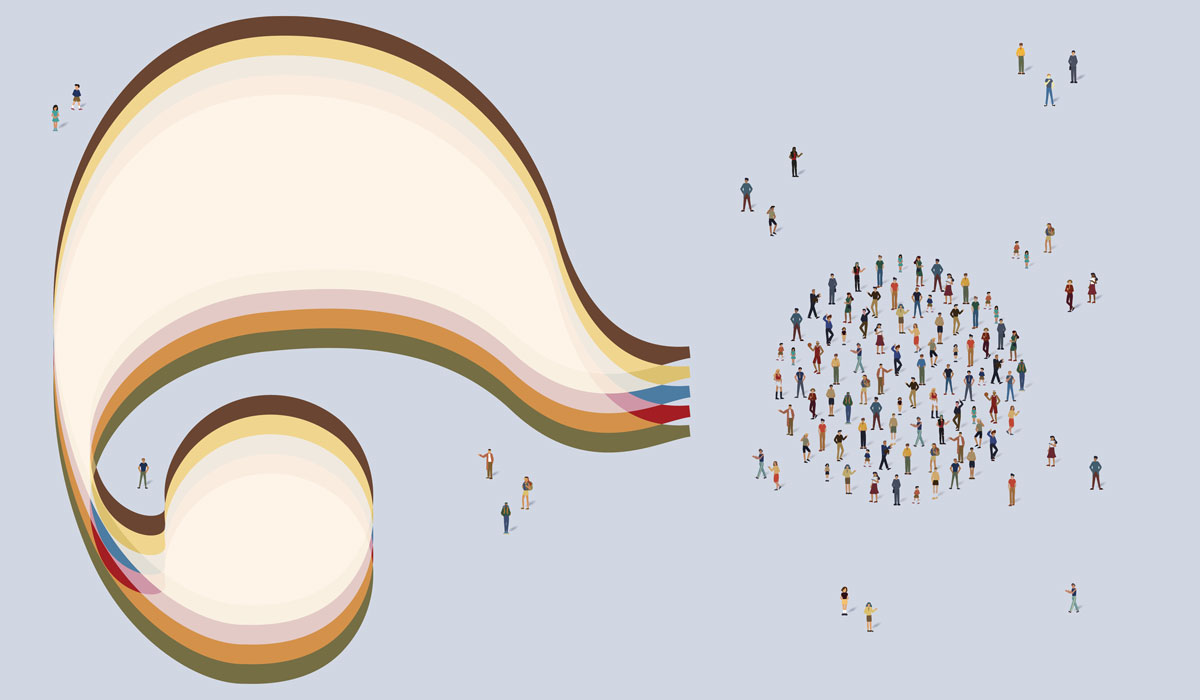
Based on sight alone, most people identify Lewis Jones, an adjunct anthropology instructor, as African American. He imagines many of his students do the same. It’s always an enlightening experience when Jones projects his DNA data on a large screen in front of his Introduction to Anthropology class and asks, “Who is this?”
“My students are always amazed that the data is mine because it doesn’t deliver on their preconceived assumptions,” said Jones, who comes from ancestors with a mix of racial and ethnic backgrounds scattered across Western and Southern Europe, Africa, and East and Southeast Asia. “I want students to understand that we can’t look at a person and judge them solely by what we see.”
Companies such as 23andMe, which Jones used, allow consumers to spit into a tube, mail it, and, in a matter of weeks, indulge their curiosity about the mysteries surrounding their global ancestry and potential health risks. The results include an analysis of individual DNA and a map of segments connected to ancestries (Irish or Native American, for example), providing the consumer with a percentage breakdown of where their ancestors came from, potentially as granular as the specific region of a country. They can even tell you how much Neanderthal, an extinct group of ancient humans, you have in your DNA and provide connections to potential relatives who have also taken the test.
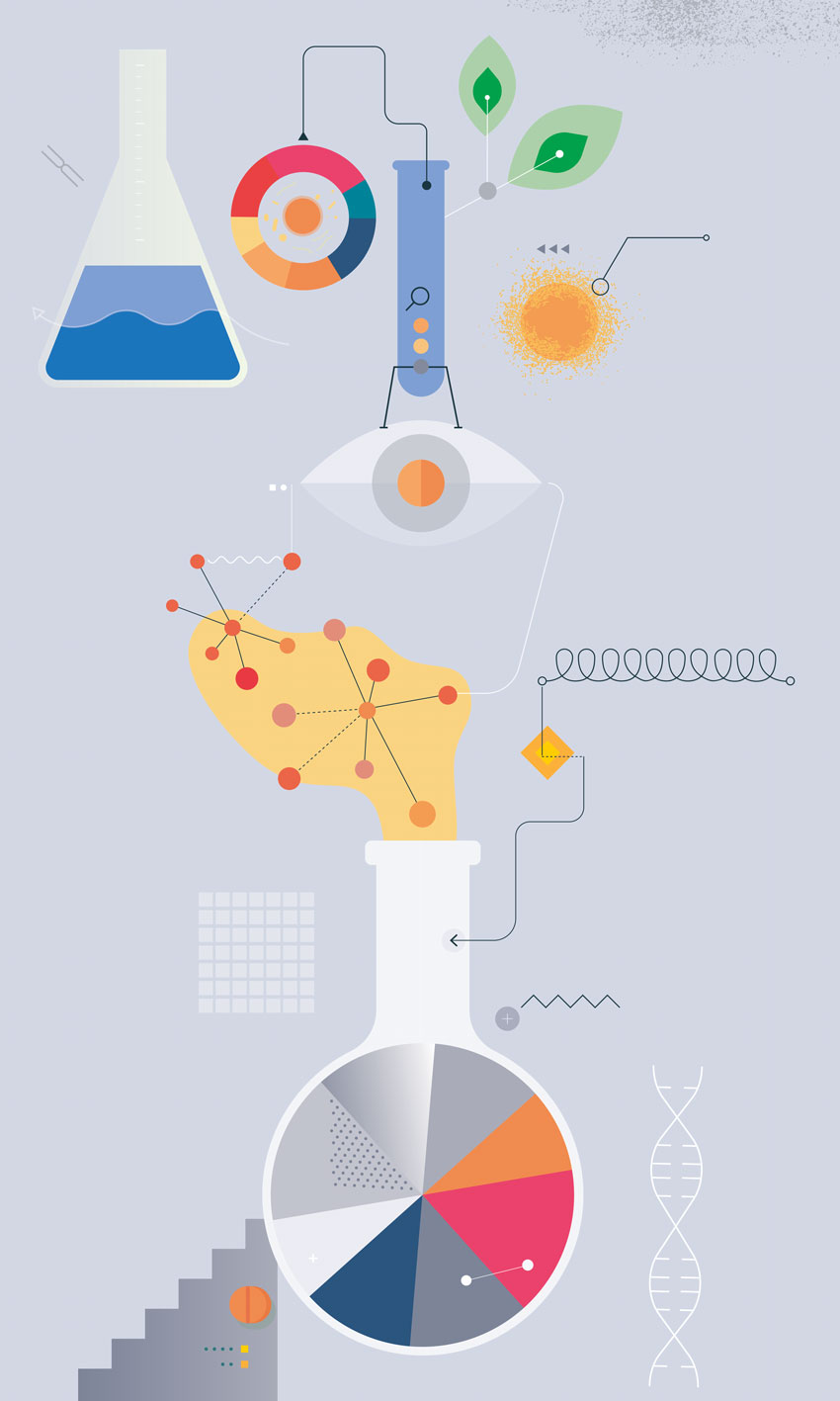 DNA testing companies have invested a lot of time and money into the assumption that most people at least partially feel a significant part of their identity has to do with their DNA. That investment has paid dividends; the kits are now big business. When all the direct-to-consumer DNA kits available are combined, 26 million people, or roughly eight percent of the U.S. population, has already taken one. That number is expected to reach 100 million within two years, according to MIT’s Technology Review. 23andMe, one of the most popular tests, is rumored to be worth more than $2.8 billion.
DNA testing companies have invested a lot of time and money into the assumption that most people at least partially feel a significant part of their identity has to do with their DNA. That investment has paid dividends; the kits are now big business. When all the direct-to-consumer DNA kits available are combined, 26 million people, or roughly eight percent of the U.S. population, has already taken one. That number is expected to reach 100 million within two years, according to MIT’s Technology Review. 23andMe, one of the most popular tests, is rumored to be worth more than $2.8 billion.
What motivates people to share, arguably, their most personal information and pay for the privilege of doing so?
“People want to better understand the story of who they are,” offered Jones, who doesn’t believe DNA tells everything about a person, but has always had a deep curiosity about ancestry. He completed genealogies long before DNA testing was an option and has since completed kits from 23andMe and Ancestry to test the veracity of both. (The results aligned closely.)
Sociology Prof. Cassie M. Hays, who hasn’t taken a DNA test herself, said that another motivation is that individuals want to identify more closely with particular races, ethnicities, or heritages.
“These tests allow people to imagine or link to different or new identities based on racial or ethnic background,” said Hays. “As we become a more multicultural society, certain parts of the population want an identity that isn’t just white. On the flipside, DNA tests can also give people whose history has been erased, like descendants of slaves or historically colonized peoples, a sense of belonging.”
While Hays can understand why people are drawn to DNA testing, she doesn’t think identity is predetermined by DNA. As a sociologist, she believes that identity is fluid, ever-changing, and negotiated, depending on the setting, individual, and audience.
Similarly, for Anthropology Prof. Amy Young Evrard, DNA means very little when it comes to identity. Evrard is currently writing an “academic memoir” that digs deep into the history of the American South while weaving in stories of her own Southern upbringing and ancestors. For her, DNA doesn’t tell the story of identity nearly as well as the stories told within families from generation to generation.
“I posit that writing your family history is how you really figure out who you are. What values and stories have been passed down? How did your ancestors’ experiences affect where and who you are today?”
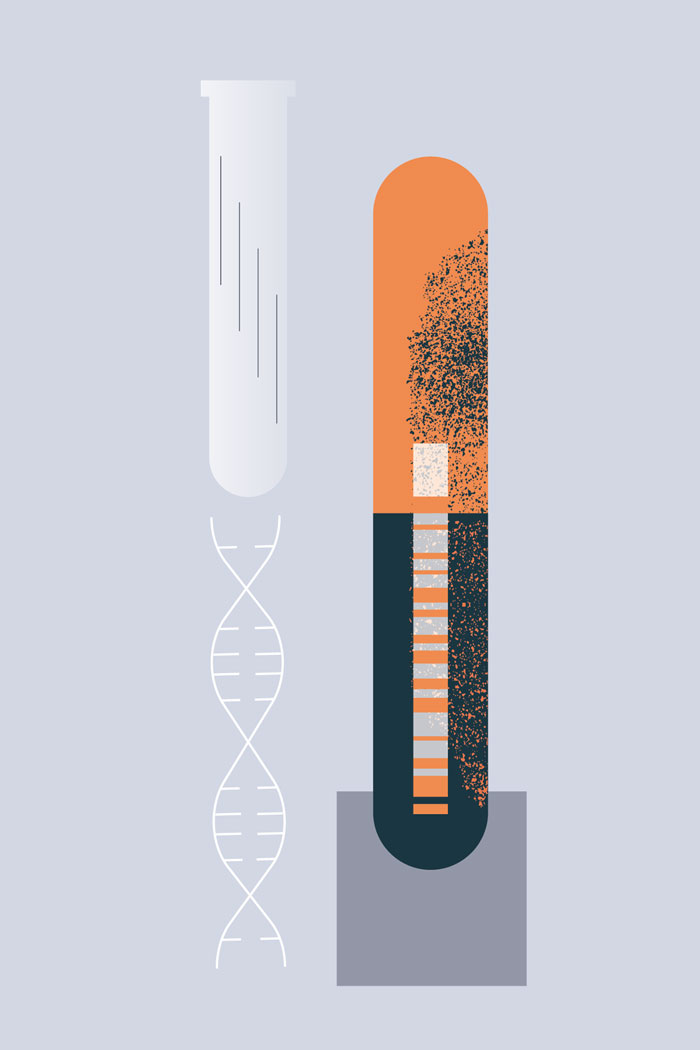 While Evrard doesn’t believe people should put too much stock in DNA testing, she’s admittedly seen the powerful effects results can have on people firsthand. For example, one family member believed strongly that the family had Cherokee background and was disappointed when a mail DNA test shattered that long-held belief. Similarly, a friend who thought he was majority Irish found out he’s only 25 percent.
While Evrard doesn’t believe people should put too much stock in DNA testing, she’s admittedly seen the powerful effects results can have on people firsthand. For example, one family member believed strongly that the family had Cherokee background and was disappointed when a mail DNA test shattered that long-held belief. Similarly, a friend who thought he was majority Irish found out he’s only 25 percent.
“A lot of distress came from those results,” Evrard explained. “My friend reacted as if he was no longer who he had always thought he was.”
Evrard strongly disagreed with the friend’s assessment, arguing that identity is much more than genetics. “What matters is that there’s a family story of grandparents coming from Ireland—taking the ship, settling in New York City, and then finding their way to Ohio. My friend learned about their values, religion, and how they raised their kids—that’s what shaped him into who he is. The genetics don’t matter.”
Nevertheless, sometimes the genetics really do matter, particularly when people discover secrets about parentage or unknown relations. There have been reports, for example, of people learning a parent is not their biological parent or that they have a previously unknown sibling or 30 (seriously). Adopted children have found birth parents. DNA testing kits have even aided in solving cold cases and identifying serial killers through the backwards DNA mapping of distant relatives.
There can be no doubt that DNA testing kits surface questions about identity, nurture versus nature, and certainly the protection of personal information and the ethics surrounding DNA usage. Yet, they are seemingly here to stay and likely to increase in popularity. When something this personal enters the zeitgeist, people want to know the results are accurate.
Health and Identity
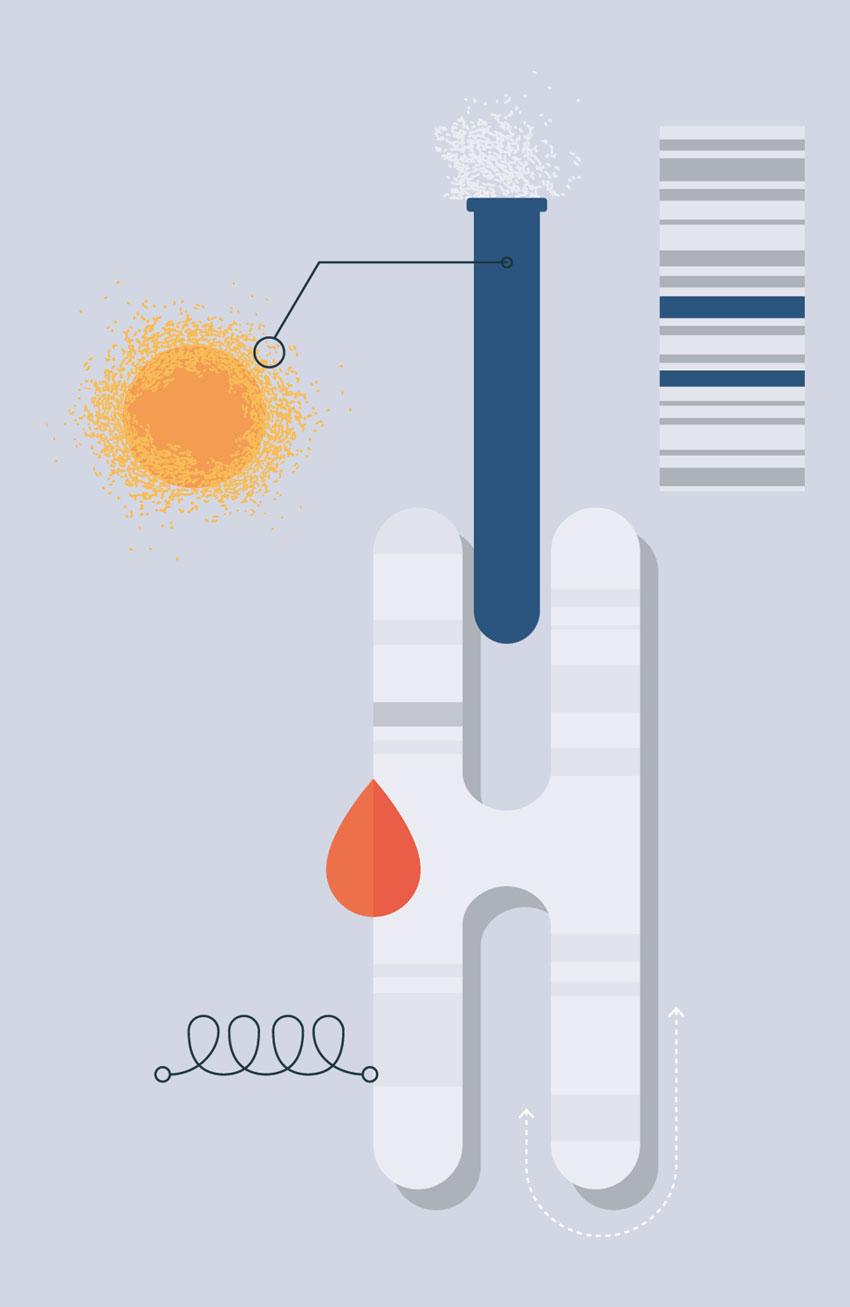 Biology Prof. Steve James ’80, whose research deals with cell division and what goes awry when cancer develops, said the tests are very accurate and getting better every day with the advancement of technology. He explained that the value of a company such as 23andMe resides in the strength of its data set. The more people who take the test, the more precise the results will be. Right now, 23andMe is working to improve its data sets, especially among Africans, Middle Easterners, Central Asians, Southeast Asians, and indigenous Americans. But the results it does provide are pretty solid, according to our experts.
Biology Prof. Steve James ’80, whose research deals with cell division and what goes awry when cancer develops, said the tests are very accurate and getting better every day with the advancement of technology. He explained that the value of a company such as 23andMe resides in the strength of its data set. The more people who take the test, the more precise the results will be. Right now, 23andMe is working to improve its data sets, especially among Africans, Middle Easterners, Central Asians, Southeast Asians, and indigenous Americans. But the results it does provide are pretty solid, according to our experts.
A former pupil of James and a Case Western University professor in the genetics department, Peter C. Scacheri ’94, said there should be no major concerns about the accuracy of identifying the different nucleotides—the basic building blocks of DNA—that people have throughout their genome. The ability to predict genetic relatedness with other family members based upon millions of different nucleotides is also very accurate.
In addition, “DNA sequencing technology is advancing very quickly—getting easier and easier, and cheaper and cheaper,” said Scacheri. This has implications for the future of not just ancestry, but also health and medical research.
Health, or a lack thereof, can become a big part of how we view ourselves. Do we identify as a cancer survivor or someone living with multiple sclerosis? Does a family history of Alzheimer’s disease color our perception of ourselves?
23andMe provides consumers with the option to learn more about their health risks for diseases such as diabetes, Alzheimer’s, and breast cancer, as well as carrier status for genetic abnormalities that could affect future children, such as cystic fibrosis. It will even tell you, based on your DNA, if you are more likely to enjoy caffeine, have straight hair, or sleep deeply.
But how much stock should be placed in this strand of the testing? Should it change our behaviors or how we view who we are?
In short, “genetics is a probabilistic science,” Scacheri explained. 23andMe offers a limited snapshot of your health, but it’s still based on probabilities and leaves much out. 23andMe can alert you to some risk of developing a disease, but it can’t predict if you will absolutely develop that disease, for example. Other factors, such as the environment, and lifestyle choices, such as diet, exercise, and risk behaviors, also matter. As Jacob L. Mueller ’98, assistant professor of human genetics at the University of Michigan, and also a former student of James, explained succinctly, “DNA variants are not a diagnosis.”
Should people change their actions based on their health results? Maybe. Maybe not.
“For a lot of different common diseases, the test will tell you that you have a one to threefold increase over the general population for risk of that disorder,” added Scacheri. “That’s not always particularly helpful, or something that I would act on given that risk.”
Nevertheless, there are some genetic markers that should be taken more seriously than others, like the BRCA, or “BReast CAncer gene,” mutations in the BRCA1 and BRCA2 genes, which signify an increased risk for the development of breast or ovarian cancer. In contrast to many other disease markers, BRCA represents a massive risk increase. According to cancer.gov, someone with a BRCA mutation has an approximately 70 percent chance (give or take) of developing breast cancer by the age of 80, which is why celebrities such as Angelina Jolie have undergone preventative double mastectomies.
DNA sequencing technology is advancing very quickly—getting easier and easier, and cheaper and cheaper,” said Peter C. Scacheri ’94. This has implications for the future of not just ancestry, but also health and medical research.”
“If someone is a carrier for one of these variants, they should definitely take action,” said Mueller. “If 23andMe comes back positive for BRCA, take those results to your doctor immediately.”
On the other hand, if an individual’s 23andMe results do not show the BRCA marker, the test taker should not necessarily sigh in relief. 23andMe only tests for three of the gene variants related to BRCA, but there are many others.
“If the test taker is of Ashkenazi Jewish descent, one can feel more comfortable with a negative result,” said James, “because the three disease-causing variants tested by 23andMe are the most common in that population. However, it’s still not a guarantee.” For other populations, many other disease-causing variants occur in the BRCA1 and BRCA2 genes.
All of the experts agreed that if testing raises concerns, consumers should take their results to a genetic counselor who can better understand and communicate results. There may be reason to make changes or do more testing. In fact, Mueller changed his own behaviors because of his personal data, which he downloaded from 23andMe and reanalyzed himself for added insights.
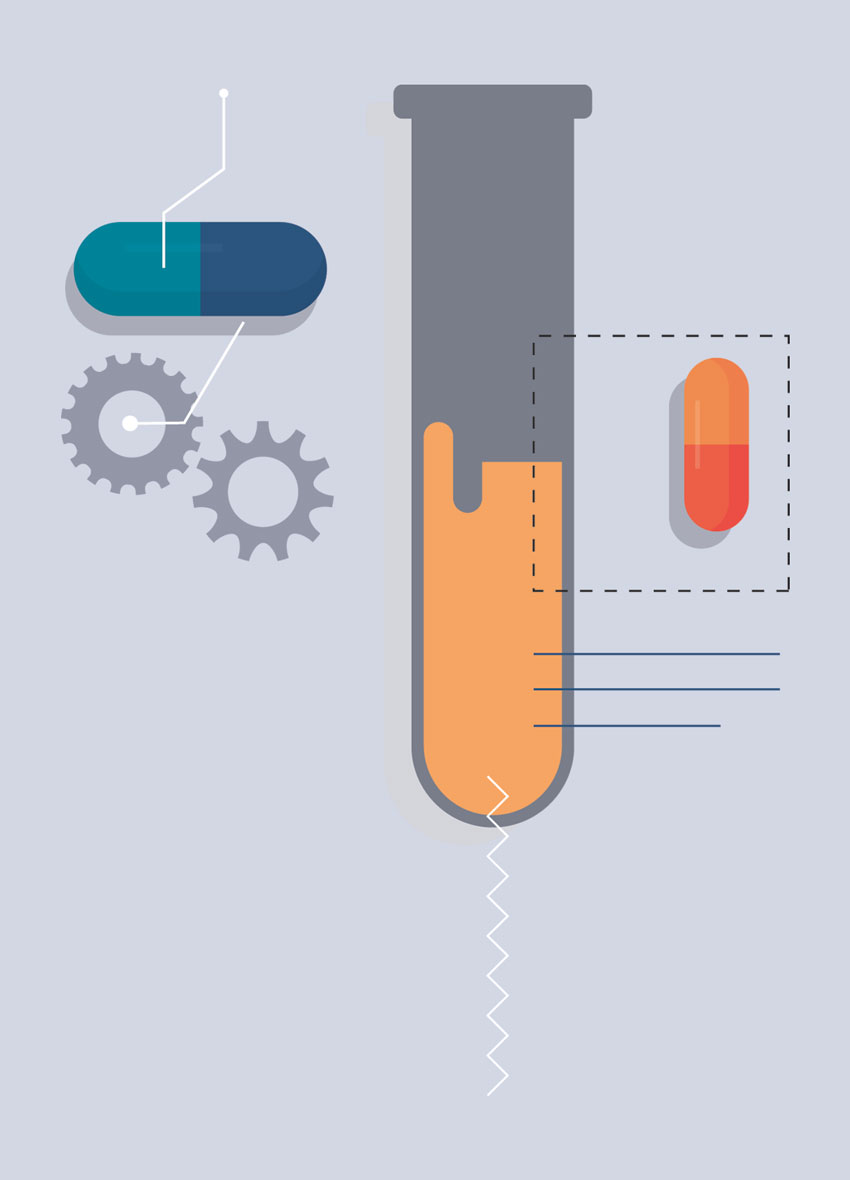 “I found out that I have an eight times higher risk of getting thyroid cancer, so I did make changes. I limit my exposure to radiation and am very careful to cover my neck when I am exposed to radiation,” he said.
“I found out that I have an eight times higher risk of getting thyroid cancer, so I did make changes. I limit my exposure to radiation and am very careful to cover my neck when I am exposed to radiation,” he said.
James and Scacheri, unlike Mueller, have not completed a DNA testing kit. Why? They don’t want to know the results.
“I’m always concerned about finding out that I’m predisposed to a late-onset disease like Parkinson’s, or something you cannot treat or do anything about. I don’t know if I want that information. I have enough anxiety as it is,” Scacheri said with a laugh.
James expressed similar feelings. “I don’t want to take the health test because the information is limited. What if I get a dire result for Alzheimer’s? There may be other gene variants that are mitigating or protecting me from that disease that we don’t yet know about. I don’t want to worry about something that isn’t going to happen or might bias my perception of myself.”
The perception of one’s self can be seemingly wrapped up in several different things. As James noted, health can be a big part of that perception. For Scacheri, like Evrard, it’s more about shared experiences, stories, heritage, and histories.
He said, “I identify more with my Italian heritage than my genes. Identity is about the stories passed down through generations. It’s the foods we eat and our culture,” he said. “Sure, the genes have something to do with it, but I don’t really identify with the DNA sequence.”
Rather, following this line of thinking, identity is constructed through an amalgamation of experiences and variables. It’s not just what you look like. It’s not just stories passed down from generation to generation. It’s not just shared histories or memories. And it’s definitely not just your DNA. It’s all of these things and more—wrapped up in a complicated, ever-changing package.
As Jones told his class, “DNA testing is just a tool. It doesn’t tell the whole story. It can only tell part of the story.”
By Katelyn Silva
Posted: 10/01/19